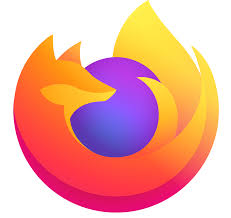Good day, dear readers of Mobile Geeks computer repairs blog! Nowadays, technological progress does not stand still, and every day, not only new devices, interfaces, etc come out….but the old tried and true devices get improved.

Today, I want to tell you about the new version of the interface Universal Serial Bus – USB 3.0 SuperSpeed.
USB 3.0 (USB SuperSpeed) is a new generation of USB (Universal Serial Bus) interface.
One key difference from its predecessor USB3.0 (USB 2.0 HighSpeed) is the theoretical maximum data transfer rate. With USB 2.0, this rate was equal to 480 Mbit / s, USB 3.0 has 5 Gbit / sec.
Another difference between 3.0 and 2.0 is that not only that the speed of data transmission has increased but also, the humble USB is now isochronous, ie USB 3.0 can transfer data at a maximum speed in both directions. That is super good for us computer repairs geeks on different jobs. mskes things go so much faster.
Early versions of Universal Serial Bus have only been able to transmit data at a maximum speed in one direction only. The ability to do both directions is a vast improvement and is very important for future data storage devices.
In practice, between the device and the controller-established maximum data transfer speed reaches about 380 MB / sec. This exceeds the maximum data transfer rate Interface SATA-II (approximately 250 MB / s) and USB 3.0 interface on the order of magnitude faster than IEEE1394 and USB 2.0.
In previous versions of the USB interface had a land line, power and differential pair for data transmission. The USB 3.0 adds two differential pairs for SuperSpeed-mode as well as a separate screen. Now the cable resembles a twisted shielded pair (STP) standard 6 and part of SuperSpeed USB 3.0 interface data transfer methods used and performance reminds PCI-E 2.0 1x external performance, but it is fully compatible with it.
A new type of connector – USB Powered B. In addition to the existing USB 3.0 contacts there appeared two brand new and DGND DPWR – they provide the power to the controller through the connected device (in earlier versions of the interface was the opposite).
In USB 3.0 enhanced power devices. The controller can give up to 900 mA (in previous versions was 500 mA). The minimum amount of current per device is increased to 150 mA, so a controller device 6 can be driven by one or 150mA device which “eats” 900 mA. Also, intermediate solutions are possible. Reduced to 4 volts minimum operating voltage for the connected device. If this is too much computer repairs speak for you, don’t worry. You do not need to understand any of this to use the device.
In addition to physical changes USB 3.0 SuperSpeed got the opportunity to hold each individual device virtual channel. Previously, controller transmit data to all devices connected to it, and those already dealt themselves, which of them are received packets. This improvement, dear computer repairs blog readers, with some reservations, can be called the hub USB 3.0 – a network switch that is actually correct.
The only noticeable drawback of the USB 3.0 is to reduce the maximum cable length SuperSpeed up to 3 meters. The specification for this controller does not say anything about this but, any computer repairs geek will tell you it is better not exceed this value.
Approximate mechanical life for ordinary full-size USB 3.0 connectors designed for 1500 cycles “connection-disconnection” ruggedized connectors – 5000 cycles, the most stable in this respect proved XLR plug USB 3.0 Micro – it is designed for 10,000 connections and disconnections.
Compatibility and connector types
In addition to the four main contacts who kept their usual places for compatibility with previous versions of the standard, SuperSpeed connectors have five additional specific contacts that are needed to work in the new high-speed mode are located deeper inside the connectors. Full backward compatibility to ensure failed. The following briefly describes possible combinations:
USB 3.0 device will not work with USB 1.1 controller
To USB 2.0 connector can not connect the USB 3.0 cable type B, as the old type connectors for him not deep enough
The controller can be connected to USB 2.0 Device USB 3.0 connector type A and it should work in USB 2.0 mode
USB 2.0 device with built-in type, for example, a printer can be connected to the controller USB 3.0 standard cable USB 2.0 A < -> B, and it will work, as the connectors on the cable will not reach the contacts responsible for USB 3.0
USB 2.0 device with a USB connector type A, for example, “stick”, you can connect to the controller USB 3.0 and it will work there.
That is all for today’s computer repairs blog.
Over and out
Mobile Geekette














